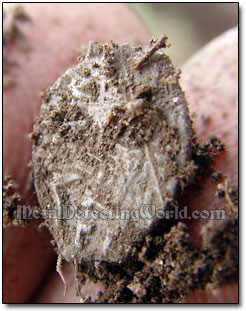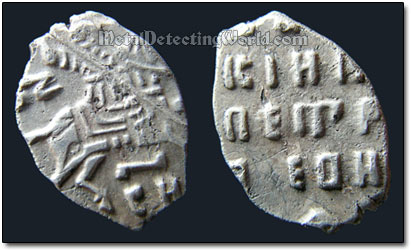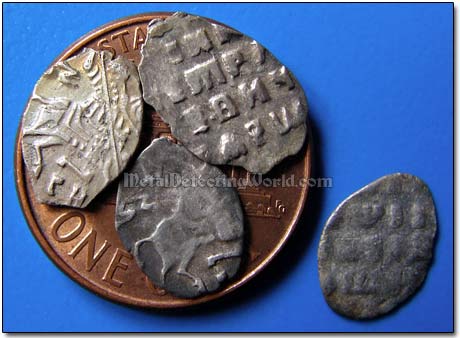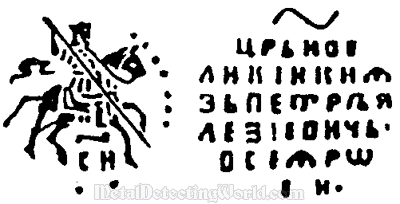Part II: Revisiting the "Virgin" Site of Swedish Tavern, page 66
Metal Detecting Silver Wire Hammered Coins
The strongest desires are the ones we have to "cultivate" in order to "trigger" our inner "mechanism-detector"! Try to remember the last time you wanted something badly, and recall what you felt.
For example, when you are hungry and imagine a delicious sweet smell of freshly barbecued baby back ribs (with mashed potatoes, green beans and Corona), you start salivating uncontrollably, and then want to drop everything and drive to the nearest "Smokey Bones". Theoretically you must apply that feeling to the object you desire to find. You need to decide how to do this in your case. Visualization helps.
The optimal case is when you are able to touch and feel an object beforehand (for example, when examining finds of another detectorist), and then keep that image and your feeling constantly in mind. "He who touches, knows; he who touches not, knows not." If an opportunity to touch does not exist, just seeing a picture of desirable object would help. Crank your imagination up to the max!..
I felt that I had enough of Swedish coppers and went to the spot which Max and Irina had been done with. Now they were both exhausted, just sitting in the folding chairs, drinking hot tea, and wondering what possibly I could find at the "trenched" spot. Ok, I had an advantage with my E-Trac metal detector and decided to do my best. For a minute, I held the last silver coin I had found and "cemented" its image in my mind. And, just in case, I switched my E-Trac's search mode into the All Metal.
What happened next surprised me more than my friends. Probably I had gone too far with my "somatosensual preparations", but the coin I had recovered was not even on my list of desirable finds for that day because I had totally forgotten about the tiny hammered coins!
"Holy Rolly Polly!"

By recognizing the characteristic pattern of the late wire money coin design, I knew that I had just found the most hard-to-find specimen - 1 Kopeck minted during the rein of Peter The Great between 1696 and 1717. The wire kopecks of that period were the lightest and smallest of all Russian wire specie, and had the lowest silver content. That is why these hammered coins are off limits for the less sensitive metal detectors.
Actually, through the dirt, I could see a Cyrillic numeral where a date was supposed to be under an image of a horseman holding a spear on the coin's obverse. Only later at home, when I used a Table of Cyrillic Dates on Peter The Great's Coins and Their Julian Date Equivalents, I dated my coin-find. You can find more details on interpretation of Cyrillic dates on coins in my Identifying and Interpreting the Old Russian Cyrillic Dates tutorial.
1700 Wire Kopeck of Tsar Peter I Alekseevich (Peter The Great)

OBVERSE: an image of the crowned horseman carrying a spear with a pointed tip, date mark "CH" ("1700") under the galloping horse.
REVERSE: the 6-line coin legend engraved in old cyrillic lettering reads:
"ЦРЬИBE / ЛИКIИKHЯ / ЗЬПЕТРЬЯ / ЛЕЗIЕВИЧЬ / ВCEAРω / ССIИ" ("Tsar and Grand Prince Peter Alekseevich of Entire Russia").
Weight: 0.28 gram
Silver Content: 0.380 (the lowest among all Russian wire coins)
Mint: Moscow
To illustrate how small the late 17th - early 18th century wire coins are, I have placed all three of them on an American Penny, and they all easily fit in!
American One Cent and Russian Wire Silver Hammered Coins of Tsar Peter I

This particular wire kopeck was hammered at the "Old Mint" that was located in China Town in Moscow. Exact and complete obverse and reverse designs of this coin are shown below.
Drawing of Obverse and Reverse Designs of 1700 Silver Kopeck of Tsar Peter I The Great
